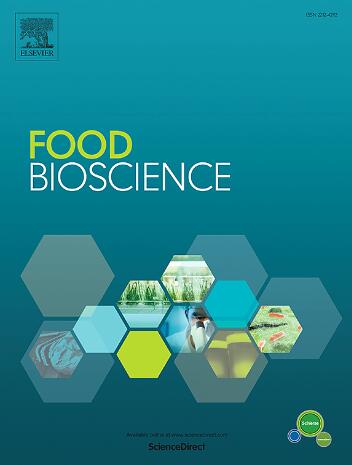Influence of monoglyceride on curcumin-loaded nanostructured lipid carriers: stability, antioxidant activity, digestion behavior, and intestinal absorption
IF 4.8
1区 农林科学
Q1 FOOD SCIENCE & TECHNOLOGY
引用次数: 0
Abstract
The impact of solid lipids in the lipid phase on the performance of lipid nanoparticles is closely associated with the type of solid lipids. This study aimed to investigate the effect of monoglyceride on curcumin-loaded nanostructured lipid carriers (NLC). Curcumin-loaded NLC with different glycerol monostearate (GMS) contents were developed using the hot high-pressure homogenization method. The study of physicochemical characteristics indicated that the particle size and crystallinity of NLC were related to the GMS content. The photostability study demonstrated that increasing the GMS content in the lipid phase from 0 % to 70 % resulted in an approximately 20 % enhancement in the retention ratio of curcumin in the system. GMS content influenced the 1,1-diphenyl-2-picrylhydrazyl (DPPH) scavenging ability of curcumin-loaded NLC but had no significant effect on cellular antioxidant activity. During in vitro digestion, a higher GMS content led to an increase in particle size. After increasing the GMS content in the system from 0 % to 85 %, both the degree of lipolysis and the bioaccessibility decreased by over 30 %. The combination of the digestion and permeation study was used to evaluate the intestinal absorption of curcumin from NLC. There was no significant difference in the intestinal absorption of curcumin between the system with a moderate GMS content (55 %) and those without GMS. Overall analysis showed that 55 % GMS in the lipid phase might be optimal, ensuring stability and improving intestinal absorption. These results might facilitate the formulation development of NLC for the encapsulation of hydrophobic active ingredients in functional foods.
单甘油酯对装载姜黄素的纳米结构脂质载体的影响:稳定性、抗氧化活性、消化行为和肠道吸收
脂相固体脂质对脂质纳米颗粒性能的影响与固体脂质类型密切相关。本研究旨在探讨单甘油酯对载姜黄素纳米结构脂质载体(NLC)的影响。采用热高压均质法制备了不同单硬脂酸甘油(GMS)含量的姜黄素负载NLC。理化性质研究表明,NLC的粒度和结晶度与GMS含量有关。光稳定性研究表明,将脂相GMS含量从0%增加到70%,可使姜黄素在体系中的保留率提高约20%。GMS含量对姜黄素负载NLC清除DPPH的能力有影响,但对细胞抗氧化活性无显著影响。在体外消化过程中,较高的GMS含量导致颗粒大小增加。将体系中GMS含量从0%增加到85%后,脂解度和生物可及性均下降了30%以上。采用消化与渗透相结合的研究方法,评价了姜黄素在NLC中的肠道吸收。在GMS含量适中(55%)和不含GMS的系统中,姜黄素的肠道吸收没有显著差异。总体分析表明,脂质期55%的GMS可能是最佳的,可以保证稳定性并改善肠道吸收。研究结果可为功能性食品中疏水活性成分包封用NLC的配方开发提供参考。
本文章由计算机程序翻译,如有差异,请以英文原文为准。
求助全文
约1分钟内获得全文
求助全文
来源期刊

Food Bioscience
Biochemistry, Genetics and Molecular Biology-Biochemistry
CiteScore
6.40
自引率
5.80%
发文量
671
审稿时长
27 days
期刊介绍:
Food Bioscience is a peer-reviewed journal that aims to provide a forum for recent developments in the field of bio-related food research. The journal focuses on both fundamental and applied research worldwide, with special attention to ethnic and cultural aspects of food bioresearch.
 求助内容:
求助内容: 应助结果提醒方式:
应助结果提醒方式:


